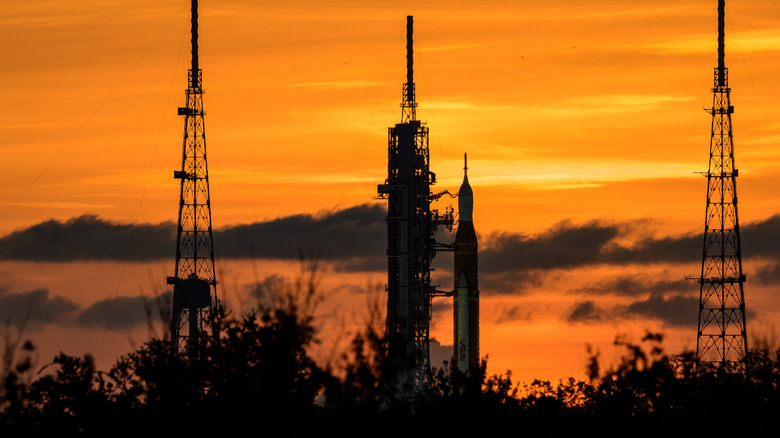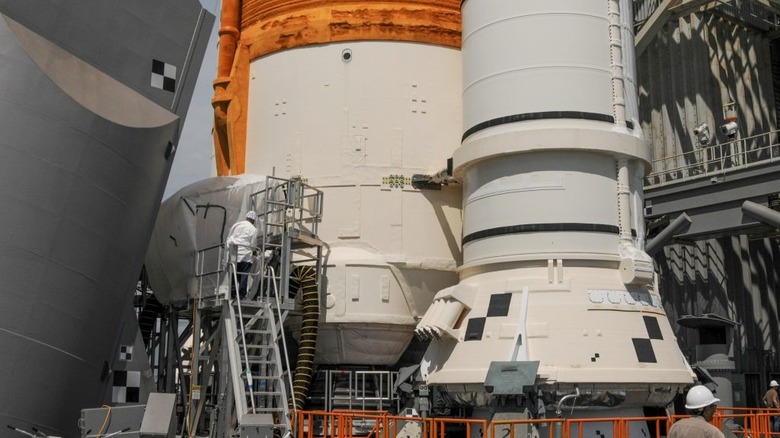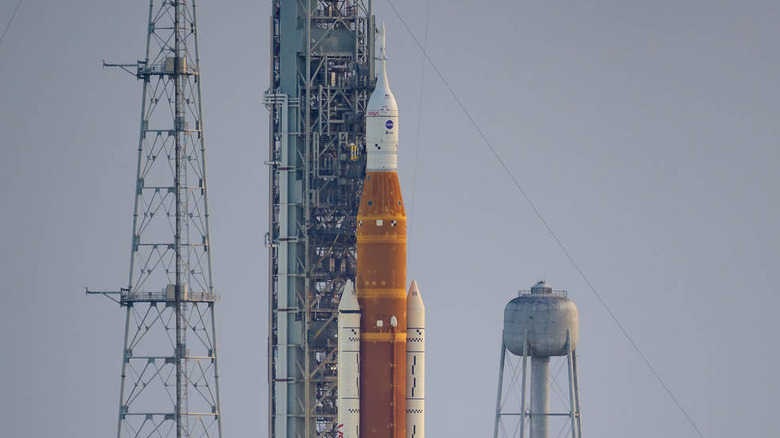With Hydrogen Leak Fixed, Artemis 1 Gets A New Launch Date
NASA's brand-new rocket, the Space Launch System (SLS), is having trouble getting off the ground. Along with a new spacecraft called Orion, the SLS is being sent on an uncrewed mission around the moon to test out hardware ahead of planned crewed missions to the moon in the next few years. Two attempts to launch the SLS and Orion on the Artemis I mission have failed to get off the launch pad, but NASA has now announced it will try launching again on September 27.
The hydrogen leak occurred during the second attempt at launching the Artemis I mission on Saturday, September 3. During the period in which the rocket's fuel tanks are filled, a leak developed in the line carrying liquid hydrogen to the rocket. The rocket uses both liquid hydrogen and liquid oxygen as fuel, and although the oxygen tank was filled successfully, the hydrogen tank was not.
The leak developed at a point called the quick disconnect, and engineers made several attempts to reseal it. This included warming up the quick disconnect to try and get it to seal, and adding pressure to the line using helium to try to pop it back into place.
None of these steps worked, however, and the hydrogen leak continued. So NASA had to call off the launch attempt once again. This follows the calling off of the first launch attempt, which had been on August 29. In that attempt, there were problems when trying to chill the engines as well as a smaller hydrogen leak.
Windows for launch
The rocket can only be launched at certain times, called launch windows, because of the path it has to travel to reach its orbit around the moon. So dates for launch are dependent on the alignment of the Earth and the moon, and NASA came up with a list of potential launch dates for the mission.
"To determine potential launch dates, engineers identified key constraints required to accomplish the mission and keep the spacecraft safe. The resulting launch periods are the days or weeks where the spacecraft and rocket can meet mission objectives," NASA explains. "These launch periods account for the complex orbital mechanics involved in launching on a precise trajectory toward the Moon while the Earth is rotating on its axis and the Moon is orbiting Earth each month in its lunar cycle. This results in a pattern of approximately two weeks of launch opportunities, followed by two weeks without launch opportunities."
Following the issues with the second launch attempt, NASA announced it would not try to launch again within that launch window, which ran until September 6. Instead, the agency opted to choose the next available launch window, giving the team time to look at the hydrogen leak issue.
What happens now
NASA has now announced it is aiming for a date of September 27 for the next launch attempt, with a backup date on October 2. NASA has also announced that it has completed repair work to the areas where the hydrogen leak occurred, including replacing seals at the quick disconnect. But more testing is required before another launch attempt can be made, so the plan is to perform a cryogenic tanking demonstration.
The idea of the demonstration is to test whether the liquid oxygen and liquid hydrogen fuels can be loaded into the rocket's core stage effectively, as this has been where problems have been occurring. This will test whether the recently made repairs have fixed the leak problem and help the team check and double-check their processes.
The demonstration test is scheduled for Wednesday, September 21, which is six days before the next planned launch attempt. During this time the rocket will stay in its current location, on the launch pad at NASA's Kennedy Space Center in Florida.


